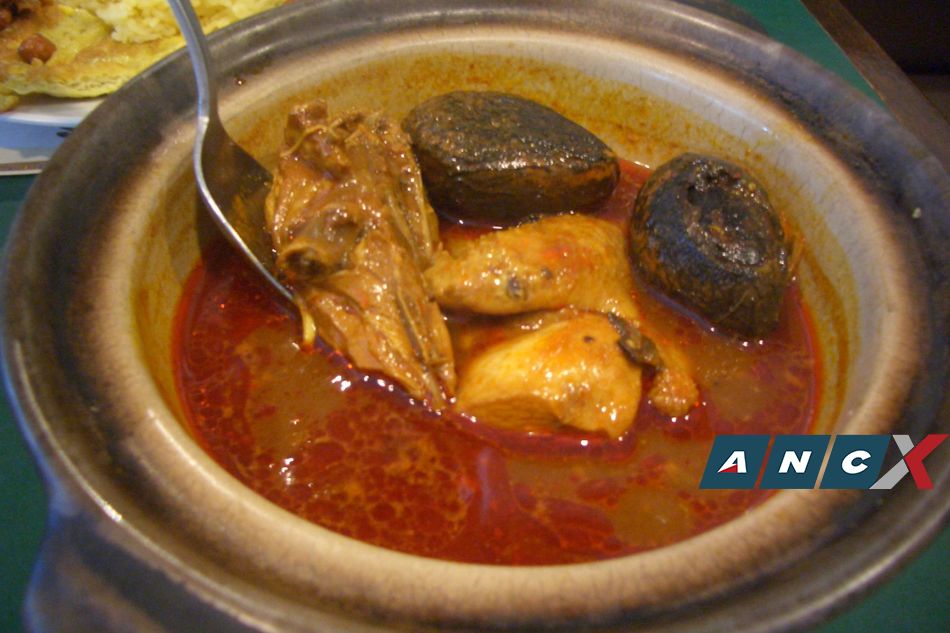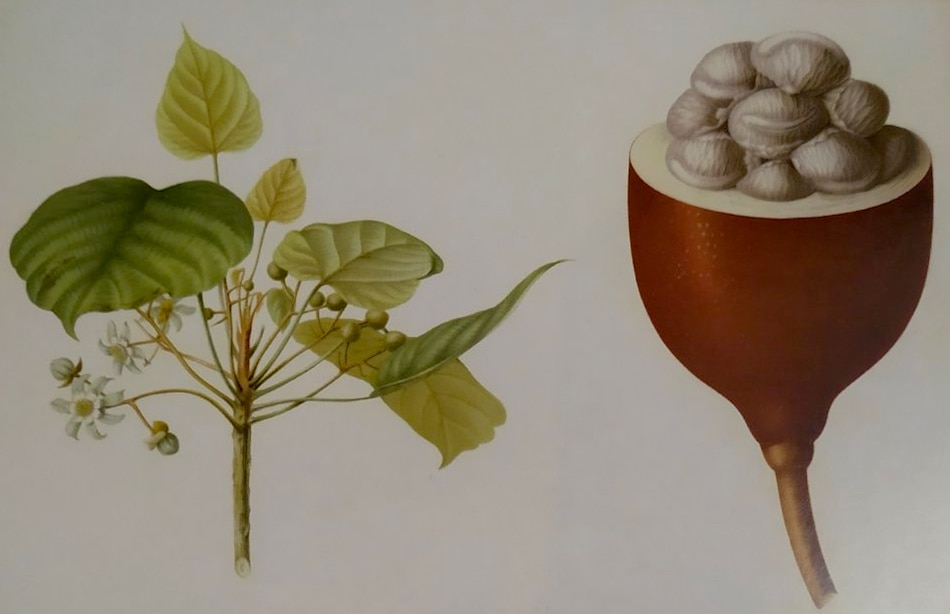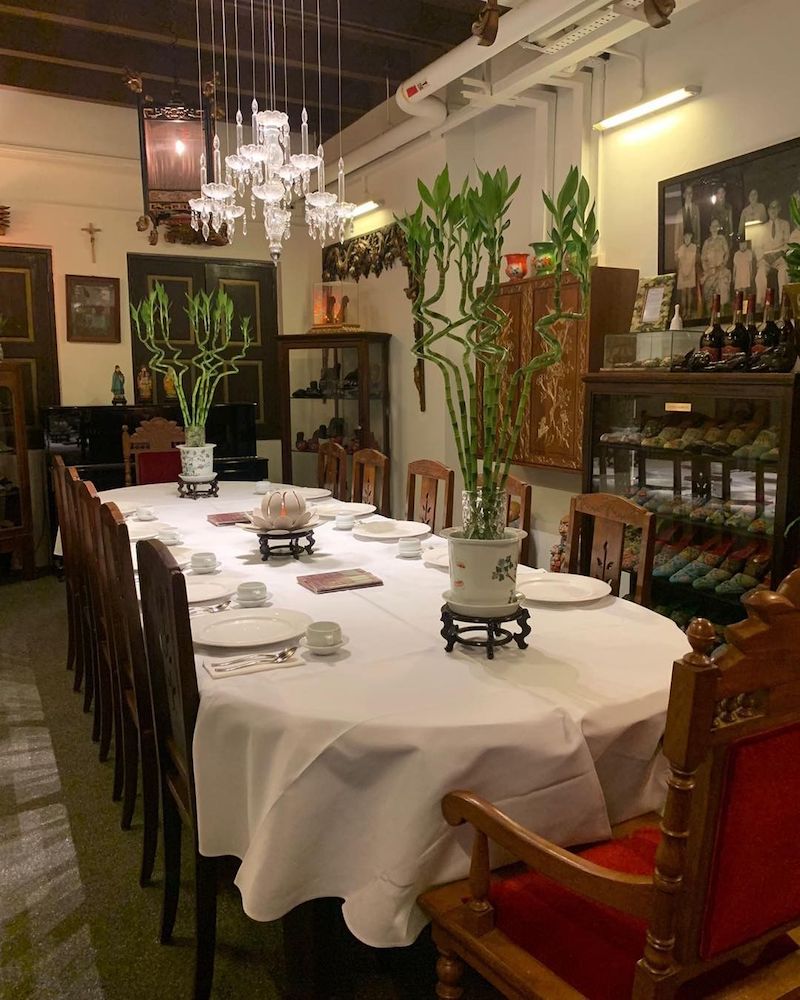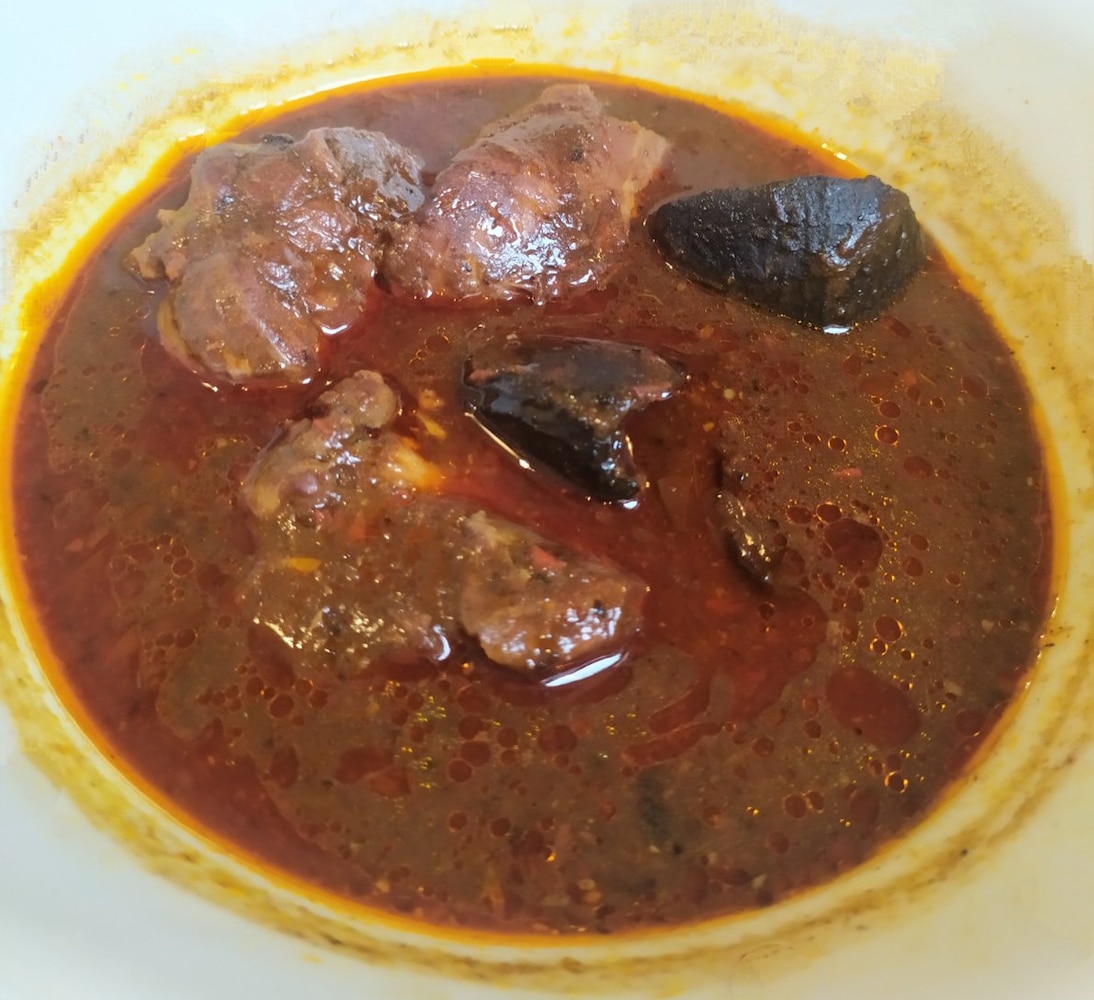When we recently made the trip to Michelin-starred restaurant True Blue Cuisine during the Singapore Food Festival, we had one goal in mind: to sample their beef rendang (Rendang Sapi). The dish came highly recommended by a foodie friend and we’re not exactly difficult to convince.
But as we were browsing the menu to see what we can pair it with, the Uncle in the restaurant suggested we order their Ayam Buah Keluak. The description: chicken stewed with black nuts. It is said to be a favorite of former Singapore Prime Minister Lee Kuan Yew. “This is our version of your adobo,” Uncle offers with pride.
Wow. He knows about our adobo. Our adobo which is currently number one on Taste Atlas’ “Best-Rated Filipino Stews.” But we didn’t go to Singapore to eat adobo, or even something akin to it. There’s adobo everywhere in the Philippines. Still, we felt Uncle very much liked for us to try the 30-SGD dish. And he was quite nice too, so we didn’t want to disappoint him by ordering something else.
Even if we had a buffet dinner to go to shortly after, we went ahead and ordered a lot at the popular Peranakan restaurant: the Rendang Sapi, the Chap Chye (cabbage stewed with glass vermicelli and mushrooms), the Ngoh Hiang (minced chicken and prawn meat rolls), the Ayer Mata Kuching (longan and red dates tea), and the Ayam Buah Keluak. We also ordered a cup of steamed white rice at Uncle’s suggestion: he said it’s the perfect partner to this ‘Singaporean adobo.’
Before leaving our table, Uncle pointed us to a portion on the menu that explains one of the star ingredients of the Ayam Buah Keluak: the “ambrosia to the Peranakans”—the buah keluak nut. It’s actually a poisonous fruit that comes from the Kepayang tree, which grows wild in Indonesia and Malaysia. It is dark brown or black in color, resembles the shape of a Brazil nut, and is roughly the size of a rugby ball.
After harvest, the fruit is washed, boiled, and then buried on the ground with layers of ash and banana leaves for 40 days to remove its poisonous elements. Afterwards, the fruit is soaked overnight, the nuts are removed, pounded with secret spices, then reinserted back into the pulp.
In a Wallstreet Journal story, True Blue Cuisine’s chef and owner Benjamin Seck reveals the other components of the dish: rempah (large and small red chilis, onions, lemon grass, and blue and yellow ginger cooked in a fire for one to two hours until a solid cake is formed); tamarind water (made with the pulp of tamarind fruit and other seasonings such as sugar and cloves, dissolved in water); and gravy (can be thick or watery, yellow, deep red or dark in color).
After taking several snaps of the heritage restaurant, with all its Peranakan-themed treasures and homey ambiance, the main event arrived at our table: a big bowl with three chunky pieces of chicken, gleaming in reddish brown sauce, plus two big wrinkled pieces of charcoal-colored nuts. The dish looked less like our adobo and more of our chicken afritada—minus the bell peppers, carrots, and potatoes.
It took a while for us to recognize all the flavors. We looked at each other perplexed. Ayam Buah Keluak didn’t taste like adobo, or afritada, or caldereta. It has a mild buttery, tangy, chocolatey flavor to it. It was a totally different animal. The spiciness was negligible, though we told Uncle we’re game for a middle-of-the-road level 3 out of 5.
“[The dish] looked so familiar, but tasted so foreign,” says Revin Mikhael Ochave of Business World. “The chicken was tender, while the buah keluak nuts and sauce were a different experience.”
“It’s an authentic Peranakan cuisine that even the uninitiated will appreciate,” says Irma Isip-Agoncillo of Malaya.
We were all glad we tried it and were satisfied by the whole experience. We thought the meal was a good introduction to Peranakan cuisine, which is very much about bold flavors, a mix of many herbs and spices, and the influence of Chinese, Malay and Indian cooking traditions.
We enjoyed everything we ordered at True Blue Cuisine. So about that Michelin star, we can only utter a TikTok word of approval: “Dasurv!” As for the battle between the two chicken stews, we like the Ayam Buah Keluak, yes, but it’s only a worthy runner-up to our adobo.







